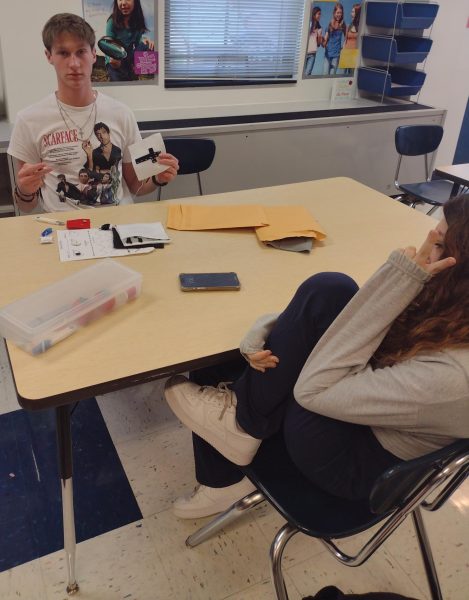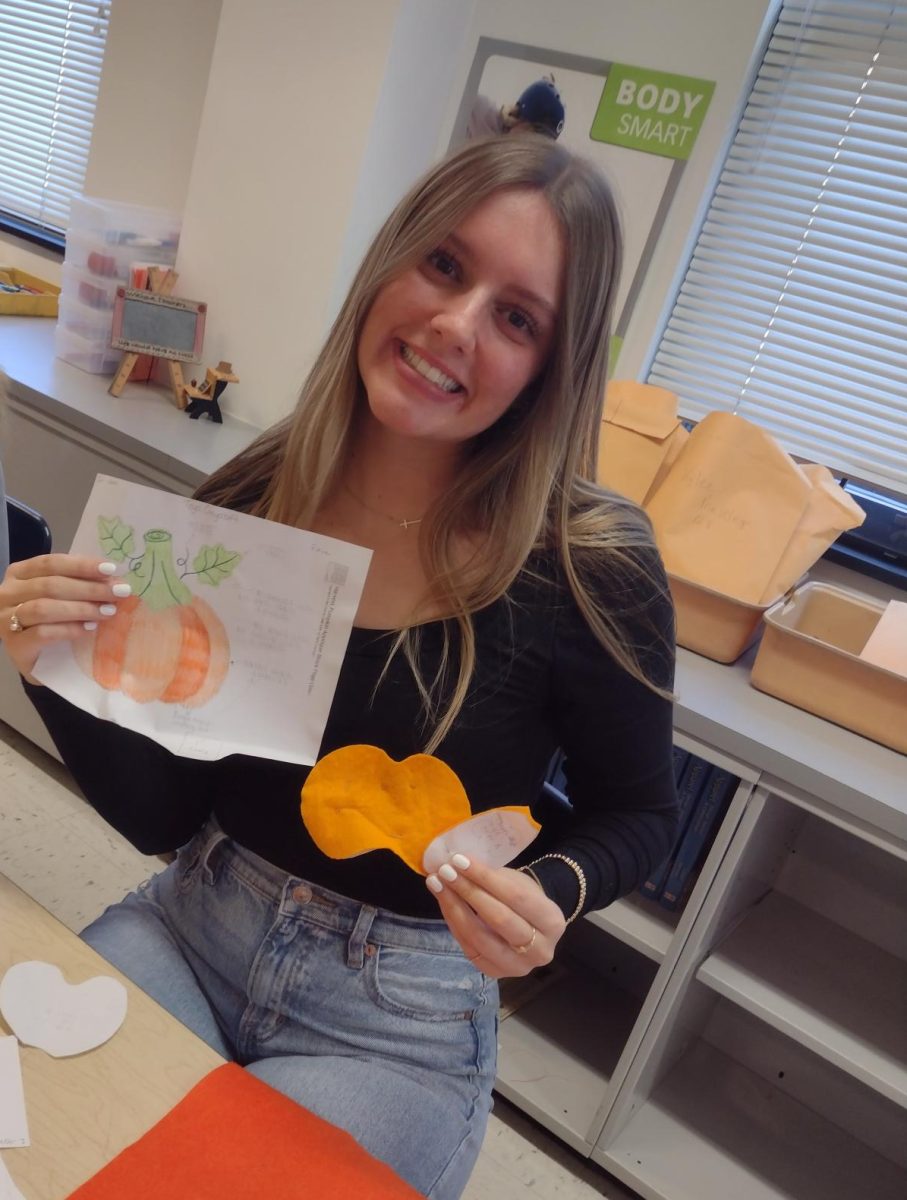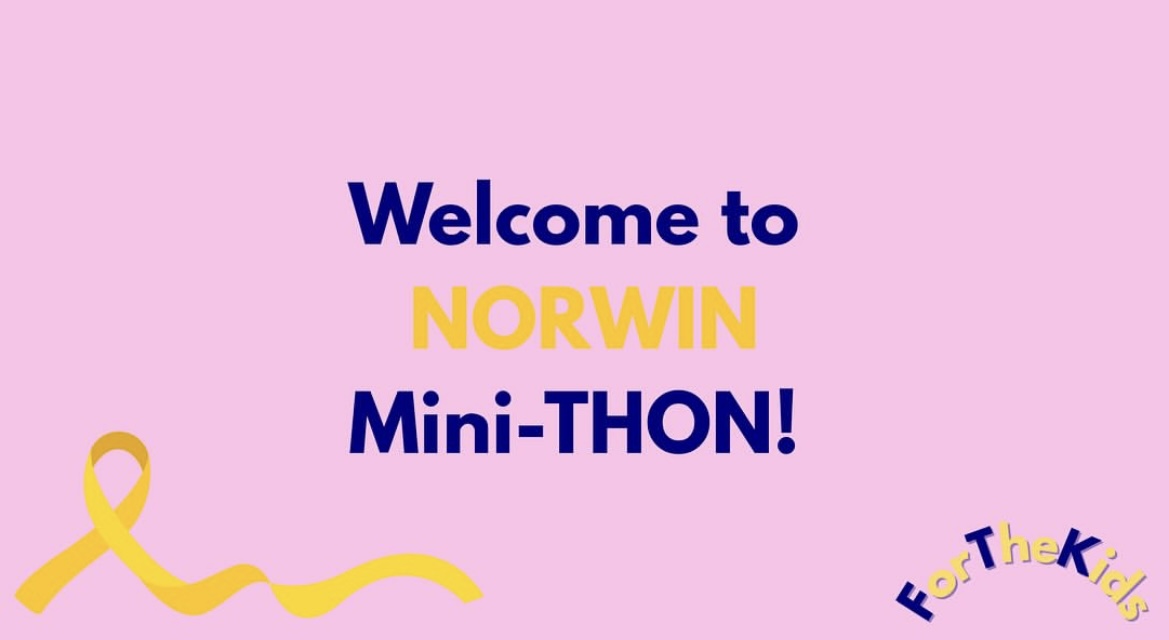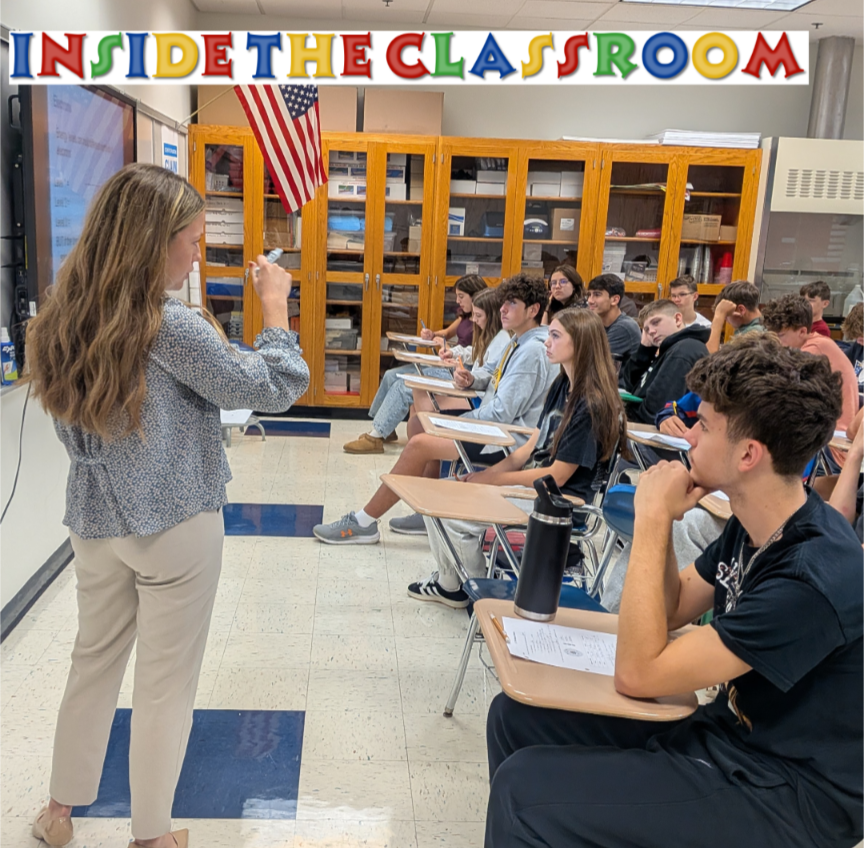
Felt, thread, stitching, and sewing: throughout October and November, Fashion Strategy & Design I students utilize these tools and strategies as they design and create their very own line of novelty items. The project gives students a hands-on experience with hand-stitching and designing as they work to create a collection of three different yet cohesive items.
Earlier in the year, before starting the project, Mrs. Greene taught the class the principles and elements of design such as line, color, and shape. Students were then asked to use these components in technical sketches of their design.
“Students have designed anything from small pillows, to t-shirt designs, socks, and novelty items,” said Greene.
The technical sketches, which students were given creative freedom with, were required to be to-scale and no bigger than 6”x 6” and had to include three different types of hand stitches that they planned to use.

Once students had their technical designs for all three pieces of their line completed, they then had to pick out their materials: felt, thread, and buttons or lace (if needed). After careful instruction from Mrs. Greene, students then cut out the pieces of felt needed for their designs using different tools such as a rotary cutter which they had also learned about in the weeks prior. For many students, this was their first time using any of these tools.
The last thing that students had to learn before sewing their projects was how to do different hand stitches. Mrs. Greene taught the class how to successfully thread a needle and begin the stitches on a piece of paper. Students learned basic stitches such as the back stitch, running stitch, stem stitch, and blanket stitch.
“I personally really liked the sewing,” said freshman Jade Peters. “I find it relaxing.”
While learning these stitches was important for students in order to complete their projects, it’s also an important life skill that students can use outside the classroom, too
“Hand sewing can be used to repair and up-cycle clothing to extend the life of one’s wardrobe,” said Mrs. Greene. She also added that hand sewing could be used for embroidery as well.
Having learned the basic stitches, students were ready to begin sewing together their novelty line and apply all the knowledge and skills that they had learned so far this semester.
Since this was many students’ first time sewing in the class, there were certain aspects that were challenging for them
The most challenging part was “learning the different stitches,” said junior Kaylee Harrity.
Other students in the class who had more experience with sewing and crafts still found that they could learn something from the project:
“[The project] taught me valuable life skills,” said Jade Peters, echoing Mrs. Greene’s earlier sentiment about applying the techniques and strategies learned in class to students’ lives outside school.
In addition to acquiring new skills and knowledge, students also said that they enjoyed how fun the project was and how they had the freedom to choose their own design for their novelty line
“[I chose my design] because strawberries are cute,” said Peters. The “cohesive factor” of her line, as required by the project rubric, is that all three of her novelty items are strawberries. Other students in the class made lines that consisted of things like hearts, animals, pumpkins, and flowers.

Students will continue to work on their novelty line throughout the rest of the semester.















